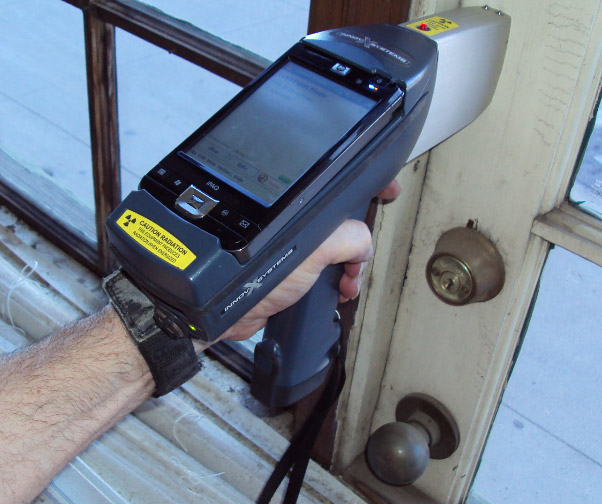Reputable DOH & HPD Lead Violation Removal in NYC-- Protect Your Building
Best Practices for Making Certain Safe and Complete Lead Offense Abatement
Resolving lead offense reduction requires a multi-faceted strategy to guarantee both safety and compliance. Preliminary analyses making use of sophisticated discovery techniques such as XRF analyzers set the phase for an accurate understanding of contamination degrees. Integrating correct control techniques, including closed barriers and HEPA filtering, paired with using individual safety devices (PPE) for employees, creates the foundation of a protected procedure. Meticulous cleaning methods, including HEPA vacuuming and wet-wiping, are critical. Yet, it's the last clearance procedure, entailing comprehensive evaluations and lab screening, that really validates a lead-free atmosphere, making certain long-lasting safety and security. How do these techniques adjoin to ensure thorough lead reduction?

Initial Evaluation
Carrying out a first evaluation is a critical initial step in lead infraction abatement. This phase incorporates a thorough evaluation of the home to recognize the visibility, degree, and particular areas of lead-based dangers. Qualified experts, such as qualified lead assessors or run the risk of assessors, must perform a thorough site evaluation, making use of tools like X-ray fluorescence (XRF) analyzers to precisely find and measure lead focus in paint, dust, dirt, and water.
The assessment must likewise include a review of the building's background, previous reports, and any type of grievances or health and wellness concerns reported by occupants - Lead Removal Contractors. Recording the findings thoroughly is necessary, as these records form the basis for establishing a reliable abatement technique. A comprehensive evaluation additionally includes tasting and lab evaluation, which are critical to validate the existence of lead and overview succeeding activities
In addition, it is vital to interact the results transparently to all stakeholders, consisting of homeowner, renters, and regulatory authorities. By guaranteeing that the preliminary analysis is carried out with precision and rigor, experts can lay a solid foundation for a targeted and reliable lead reduction process, ultimately guarding public health and ensuring compliance with regulative standards.
Appropriate Containment
Appropriate control is essential to protect against the spread of lead contaminants throughout reduction activities. Efficiently handling control lessens the danger of lead dust and particles migrating to non-work areas, therefore safeguarding both the atmosphere and individuals outside the immediate job area.

Routine evaluations of the control area are needed to look for breaches or weaknesses in the obstacle. Any kind of determined problems must be promptly addressed to preserve the stability of the containment. By adhering to these practices, abatement jobs can successfully control lead contamination and mitigate involved health threats.
Worker Protection
Making sure employee protection is critical throughout lead reduction jobs to stop occupational exposure to dangerous lead bits. Crucial procedures consist of using individual protective equipment (PPE) such as respirators, gloves, and full-body fits especially created to obstruct lead dirt and fumes. Employees must undertake detailed training on the proper use and maintenance of PPE, consisting of in shape testing for respirators to guarantee optimum efficiency.
Design controls, such as neighborhood exhaust ventilation systems, are crucial in lessening airborne lead concentrations in the workplace. Management controls must additionally be executed, including restricting the duration of exposure and rotating workers to decrease individual direct exposure times. Regular medical monitoring and biological surveillance are essential for early discovery of lead absorption, making it possible for prompt treatment and treatment.
Moreover, developing a purification procedure is important. Employees must comply with stringent decontamination procedures before breaks and at the end of their shift to protect against lead dirt from being brought outside the workplace. This includes thorough visit this site right here hand and face cleaning with lead-specific cleaner and changing out of contaminated clothes.
Careful Cleaning
Preserving a secure workplace expands beyond employee security and incorporates precise cleaning to make certain lead fragments are thoroughly gotten rid of from the site. The procedure of precise cleaning is vital in protecting against the recontamination of the mellowed out area and guarding both present and future passengers.
To achieve a comprehensive cleanup, all workspace have to be methodically sanitized. This includes making use of specialized HEPA (High-Efficiency Particulate Air) vacuum cleaner cleaners and wet-wiping methods to record and eliminate great lead dust that may have chosen surface areas. It is critical to clean all horizontal surface areas, consisting of floors, home window sills, and counter tops, in addition to vertical surface areas that may have entraped lead particles.
Workers have to wear suitable personal protective equipment (PPE) throughout cleanup to avoid direct exposure to residual lead dirt. Used cleansing materials such as wipes, sponges, and wipe heads need to be taken care of in conformity with contaminated materials disposal policies.

Last Clearance
Last clearance is the important wrapping up phase of lead abatement that identifies whether the site is safe for reoccupation. This vital step includes extensive assessment and testing to confirm that all lead threats have actually been successfully removed. The procedure starts with a visual inspection by a licensed lead-based paint inspector or risk assessor to ensure no visible dirt or particles stays. This is followed by collecting dust clean examples from various surface areas, consisting of floorings, windowsills, and various other horizontal surface areas. Lead Removal Contractors.

Final clearance testing not only secures future residents however additionally guarantees conformity with neighborhood, state, visite site and government guidelines. It serves as a recorded validation of the reduction contractor's adherence to sector best practices. Guaranteeing a thorough and effective last clearance is necessary in protecting public wellness and promoting depend on in the abatement procedure.
Conclusion
Ensuring secure and detailed lead violation abatement requires a diverse technique incorporating initial evaluations with advanced detection methods, reliable containment approaches, strict worker security methods, and meticulous cleanup procedures. The final clearance phase, including comprehensive assessments and lab testing, is vital to confirm compliance with EPA requirements. Adherence to these ideal practices ensures a safe environment for passengers, mitigates health and wellness dangers, and maintains regulatory demands, therefore advertising public wellness and safety and security in lead-affected areas.